USB, or Universal Serial Bus, was a significant development in the world of computer connectivity when it was introduced in 1998. It provided a versatile and user-friendly way to connect a wide range of devices to computers. Before the widespread adoption of USB, the serial port played a crucial role in computer peripherals and data transfer. Serial ports came in two main varieties: the DB9 (9-pin) and the DB25 (25-pin), and collectively, they were known as RS-232 ports. The shape and size of these ports closely resemble that of the (almost outdated) VGA port. Serial ports continued to be used for specific tasks even after USB became popular.
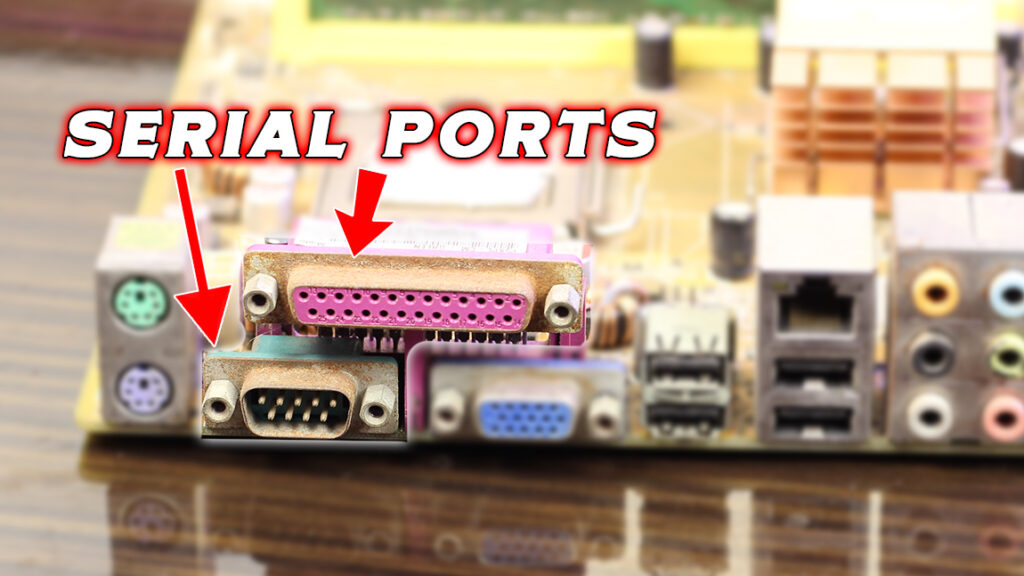
What Is a Serial Port?
Serial ports served various functions in the computing world. They were used for connecting peripherals such as mice, keyboards, modems, and printers. They were also employed for direct data transfer between two computers. When it comes to mouse and keyboard serial ports were especially used when the computers lacked PS2 ports, as was common in laptops.

One of the primary limitations of serial ports was their relatively slow transfer speed, maxing out at 115.2 kilobits per second. This meant that transferring large files, such as a 1-gigabyte file, would take an extended period, often a day or more, assuming optimal conditions. Real-world performance was typically slower than the theoretical maximum.
However, serial ports were valued for their reliability. Data transfer over serial ports was known for its low error rate and data integrity because these ports supported ‘flow control’. The RS232 standard, which was introduced back in the 1960s when there were no Ethernet ports, USB, or FireWire connections so what more would you expect.
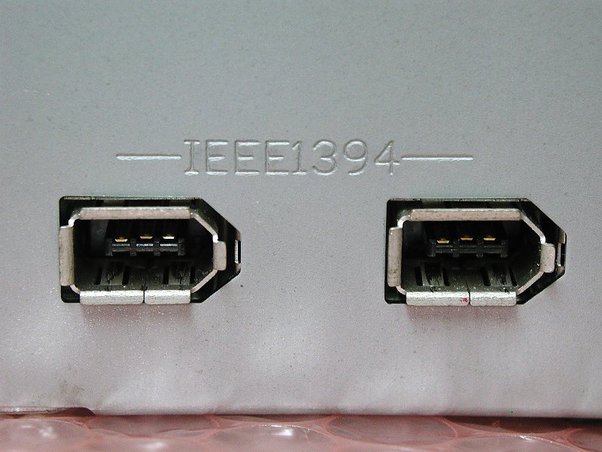
Serial ports came in different pin configurations, and they offered various features, including the ability to send control signals and monitor data from connected devices. This versatility made them suitable for a range of applications.
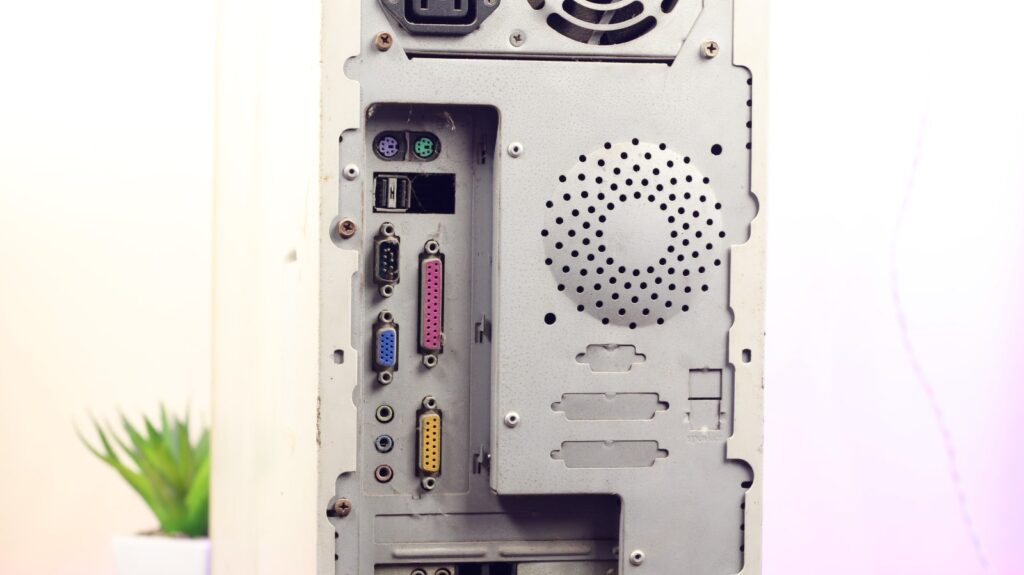
Serial Ports in Modern Motherbords
In modern times, Indeed, it can be quite challenging to come across any contemporary motherboards that feature a 9-pin serial port as an integral component of the rear I/O (Input/Output) ports.

Instead, they may provide serial port headers, which allow you to connect serial devices using a header plate. Manufacturers have been gradually phasing out these headers, but there are still options available for those who require serial ports, including USB-to-serial adapters and expansion cards. If you’re using laptop you could buy USB to Serial converters, for desktop users you could use both options.
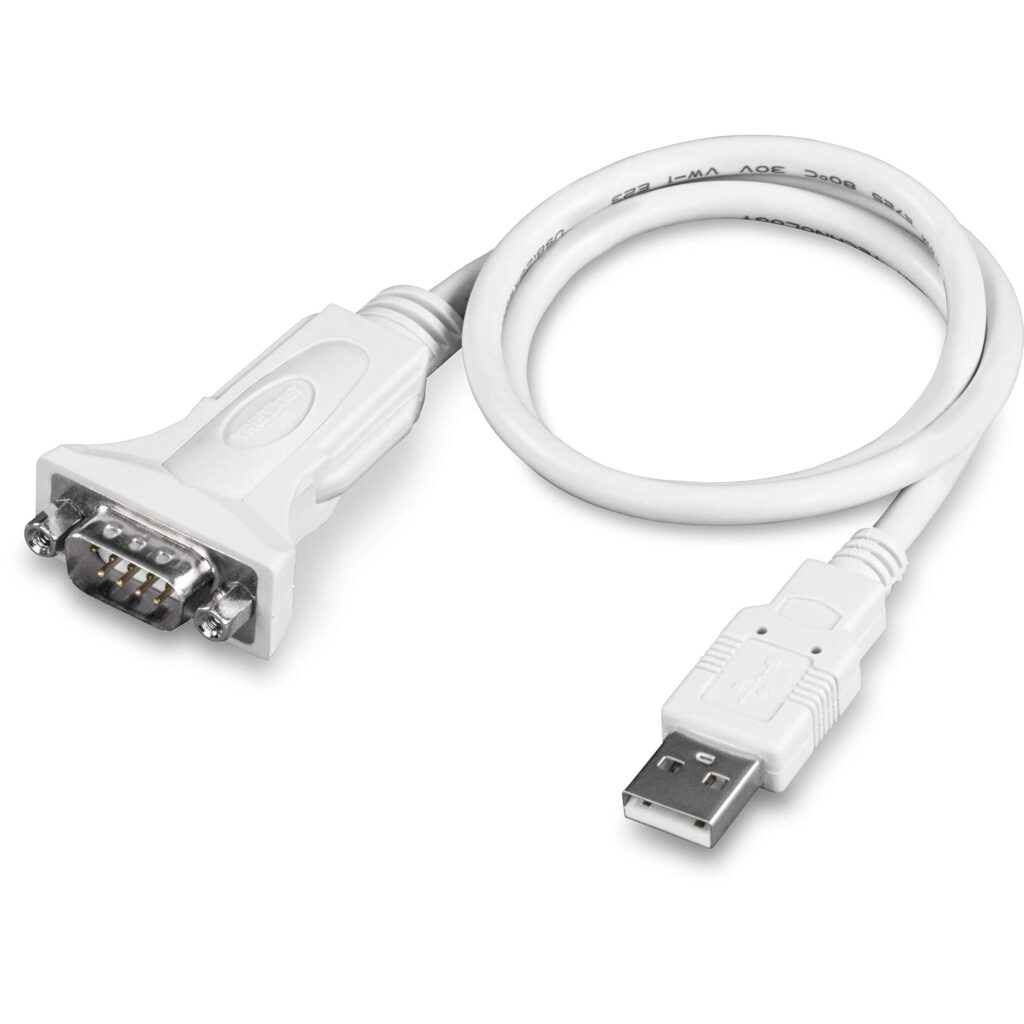
Serial Ports in Industry: Examples and Use Cases
Even today, this interface or standard still exists, and it is widely used in various fields, especially in scientific equipment, industrial machines, and networking devices where high transfer speeds are not a critical requirement. For example, industrial CNC machines continue to be connected to computers via serial ports.
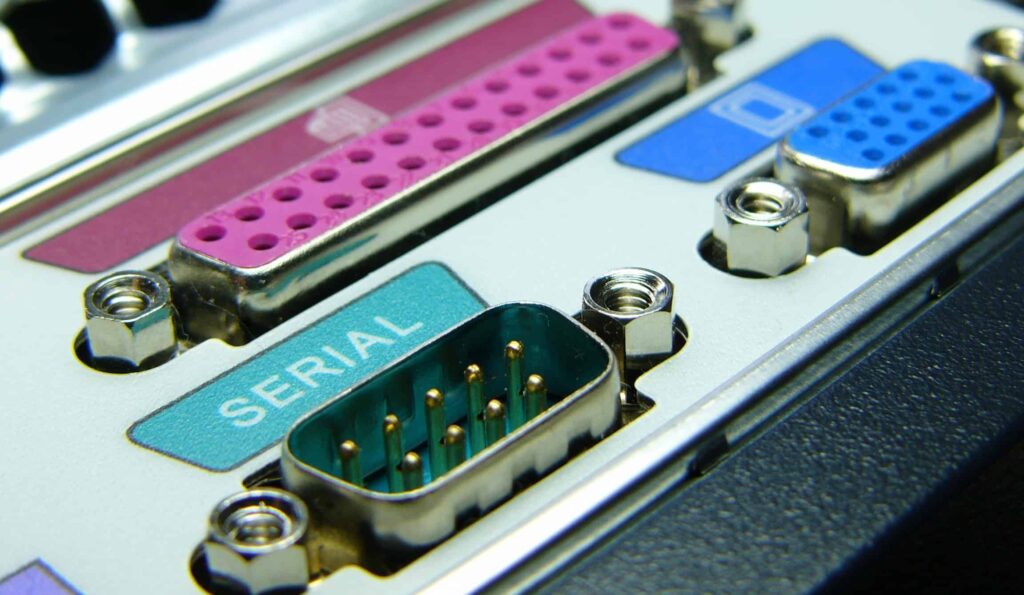
One of the primary reasons behind the persistence of this interface is its simplicity and reliability. It’s an old and well-understood interface, making it easy for anyone to work with. Additionally, implementing serial ports is cost-effective, even in today’s technology landscape. So, in situations where high-speed data transfer is not necessary, this interface remains a practical choice. Essentially, if it’s working well, there’s often no need to change it.
Even hobbyists use serial ports to program microcontrollers and other electronic projects. It’s a versatile and accessible option for various applications.

So, it might be interesting for you to learn about this interface alongside modern ones like USB, FireWire, Ethernet, and Thunderbolt. It’s an interface that was widely used in the past and continues to find its place in the present. You can even spot 25-pin or 9-pin connectors on the back of some older computers, reminding us of its historical significance.
In the Concluding Lines…
In summary, the serial port, with its simplicity, reliability, and cost-effectiveness, still has a significant presence in various industries and applications, even in today’s rapidly evolving technological landscape. It serves as a testament to the enduring value of tried-and-true technology.
